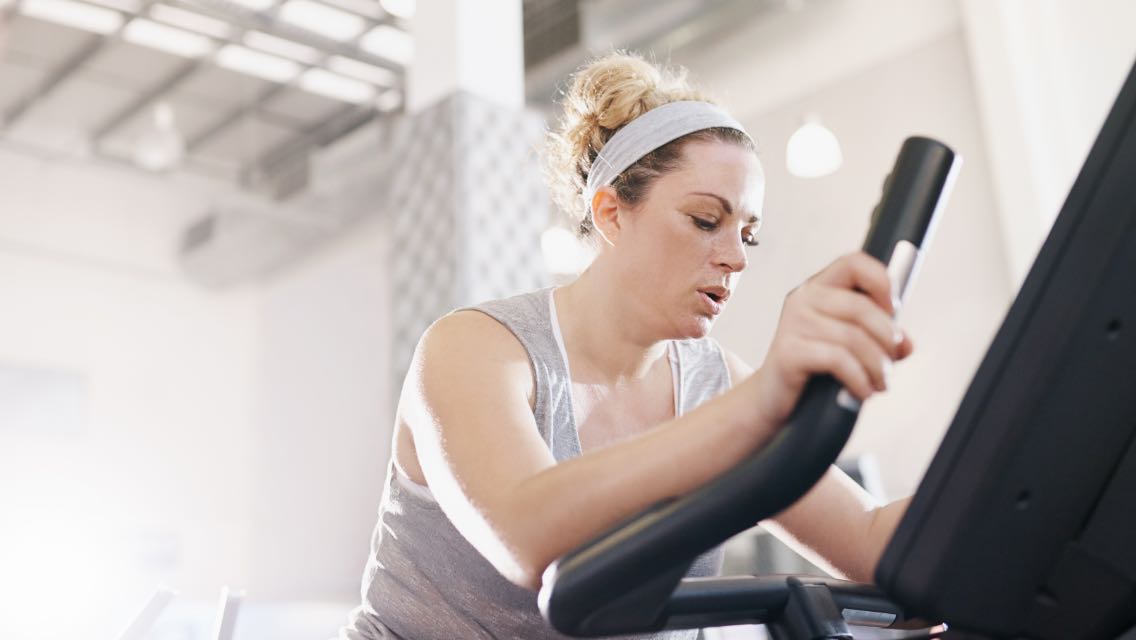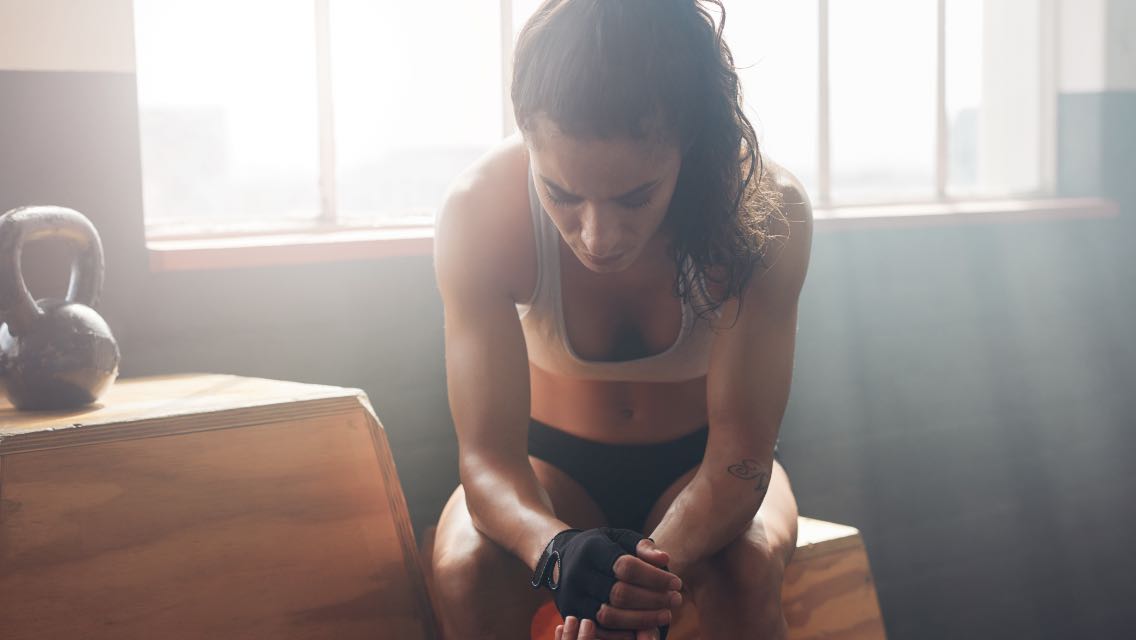Feeling under the weather? A once commonly offered piece of advice is to “sweat it out” — implying that a tough workout that elevates your heart rate, quickens your breath, and gets you more than a little sweaty will help “flush out toxins” and with them, whatever ails you.
But, you might want to heed caution before following this advice. Getting sweaty might make you feel better, but depending on which symptoms you’re experiencing, it could make you feel worse for longer — and set up the people around you to get sick, too.
Here are some tips to help you (and others!) stay safe and healthy while you’re ill, without compromising your fitness in the long-run.
If you have a cold with mild symptoms such as a runny nose and sneezing . . .
Try low-intensity exercise — but not in a community space or someplace where you share equipment. Some great options include a walk around your neighborhood, a short hike in an open space, or some body-weight moves like pushups and squats or low-key yoga in the comfort of your own home.
A burst of low-intensity activity, at a level that raises your heart rate but at which you can still hold a comfortable conversation, can help you feel better. Slow your usual pace and hold yourself to just 30 to 40 minutes, max. And again, stay out of communal exercise spaces until your symptoms have cleared up to avoid spreading the germs.
Note: If you work with a small-group fitness instructor or personal trainer, talk to them about adapting your workout routine or creating a new at-home regimen until you get better.
If you have the flu, a lung/cough situation, or gastrointestinal upset . . .
Your best bet is to stay home and focus on getting well. Low-intensity activity can prolong your illness, but high-intensity exercise can be downright dangerous. Even in healthy people, high-intensity exercise stresses the immune system; when you’re well enough to reconcile that stress, the immune response is brief. But when you’re sick, that added stress can allow infection to flourish.
High-intensity exercise can also overload congested or infection-weakened lungs, and working out with a fever will raise your body temperature even more. Moreover, you’re also risking spreading whatever you’re fighting to others. The best bet? Stay in bed, rest, get lots of fluids, and again, steer clear of communal spaces.
No matter what your symptoms, high-intensity workouts are generally not your friend when you are sick.
Low-Intensity Home Workout to Try When You’re Sick
The following routine requires no equipment and can be done in the comfort of your own home.
The name of the game here is slow and controlled — not volume and speed. The reps are low and there’s plenty of rest, so make the most of every repetition. Aim for great-for-you form and full engagement throughout the movement.
Remember, even at home, to wash your hands and wipe down the space after you’re done.
Directions: Set a timer and perform the suggested reps of each exercise at the top of each minute. Rest for the remaining time before moving on to the next move. Complete up to three rounds of the circuit.
Minute 1: Body-weight squat, 5 reps
- Stand with feet about hip-width apart and planted firmly on the ground.
- Brace your core and, with control, bend your knees and hips to squat down until your thighs are about parallel to the ground. Squat only as low as you comfortably can while maintaining good form and staying pain-free.
- Press through your feet to stand up. Squeeze your glutes at the top to achieve a full lockout.
Tip: Play with foot positioning. You may find that a small change — like slightly turning out the toes of one foot — makes a big difference in comfort and balance.
Minute 2: Single-leg Romanian deadlift, 5 per side
- Stand tall and shift your weight entirely to one foot, engaging the glute and keeping a soft bend in that knee.
- Once you have your balance, while keeping your chest up, hinge at the hips. As your hips hinge back, your chest will naturally lower. Don’t focus on where your free leg is — keep the focus on moving the glutes back as if though you are trying to tap a wall behind you.
- When you reach the end of the range of motion — typically felt as a stretch in the hamstrings or slight rounding of the back — reverse the movement and stand up. Repeat.
Tip: If it is too difficult to maintain your balance on one leg, “kickstand” the back leg by placing your toes lightly on the floor and using them for balance.
Minute 3: Bear crawl, 10 steps (1 leg + 1 arm plant = 1 step)
- Drop to your hands and knees with both hands on the floor in front of you. Then, lift your knees so that you’re balanced on your hands and feet, with your hips nearly even with your shoulders.
- Keeping your back and arms straight, move your left foot and right hand forward about 6 to 8 inches.
- Next, move your right foot and left hand forward.
Tip: Keep your hips low —your torso should be parallel to the floor (rather than in an inverted V with hips higher than shoulders) — and don’t take too-large steps.
Minute 4: Pushup, 5 reps
- Assume a high-plank position, with hands slightly wider than shoulder width, arms extended (but not locked), and body straight from your heels to the top of your head.
- Keeping your body straight and your head in a neutral position, engage your core and squeeze your glutes. Bend your arms and retract your shoulder blades to lower yourself until your arms form 90-degree angles.
- Reverse the movement, pushing yourself back to the starting position without breaking the straight line from head to heels.
Tip: Keep your body in a straight line from start to finish; engage your glutes and core to avoid sagging. Aim elbows out about 45 degrees from your body, as if you’re pointing them to the back corners of the room.
Minute 5: Dead bug, 5 reps per side (alternating)
- Lie on your back, contract your abdomen, press your lower back into the floor, and keep it there throughout the exercise.
- Extend your arms straight up toward the ceiling and raise your legs into a tabletop position, knees bent at 90 degrees, shins parallel to the ceiling, and feet flexed.
- Keeping the lower back firmly on the floor, slowly lower your right arm overhead and extend your left leg out and down. Don’t let your back arch off the floor.
- Reverse the movement and repeat the move with the opposite arm and leg.
- Repeat by alternating sides.




